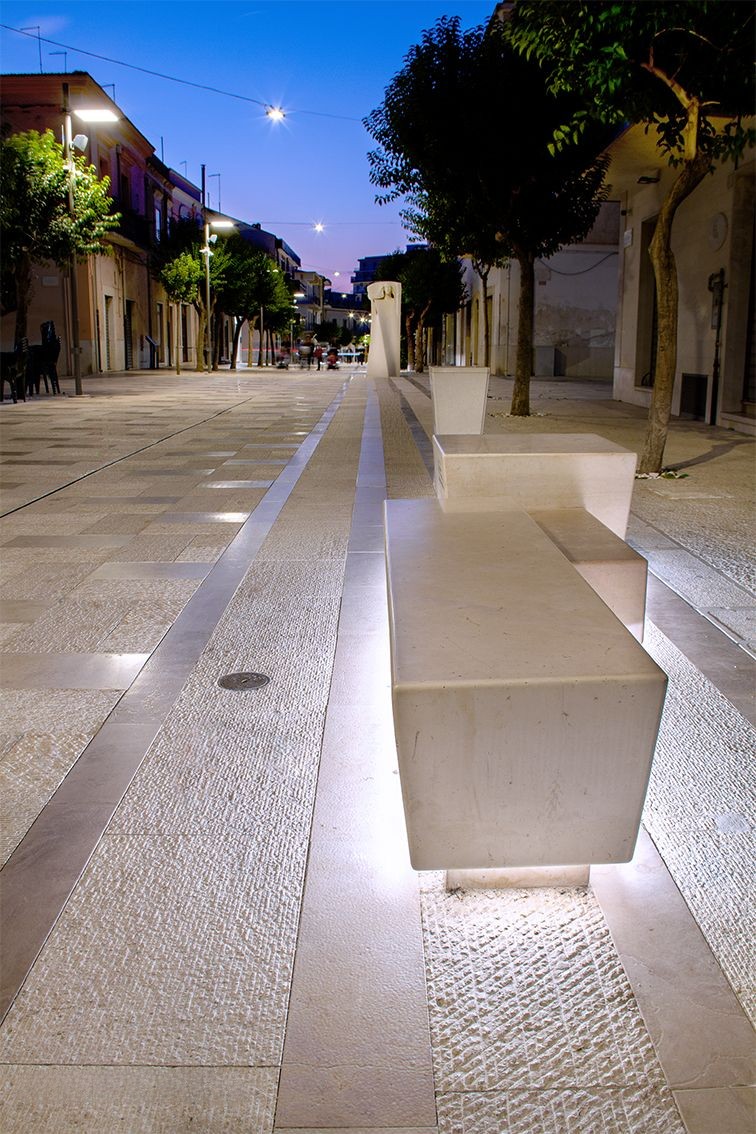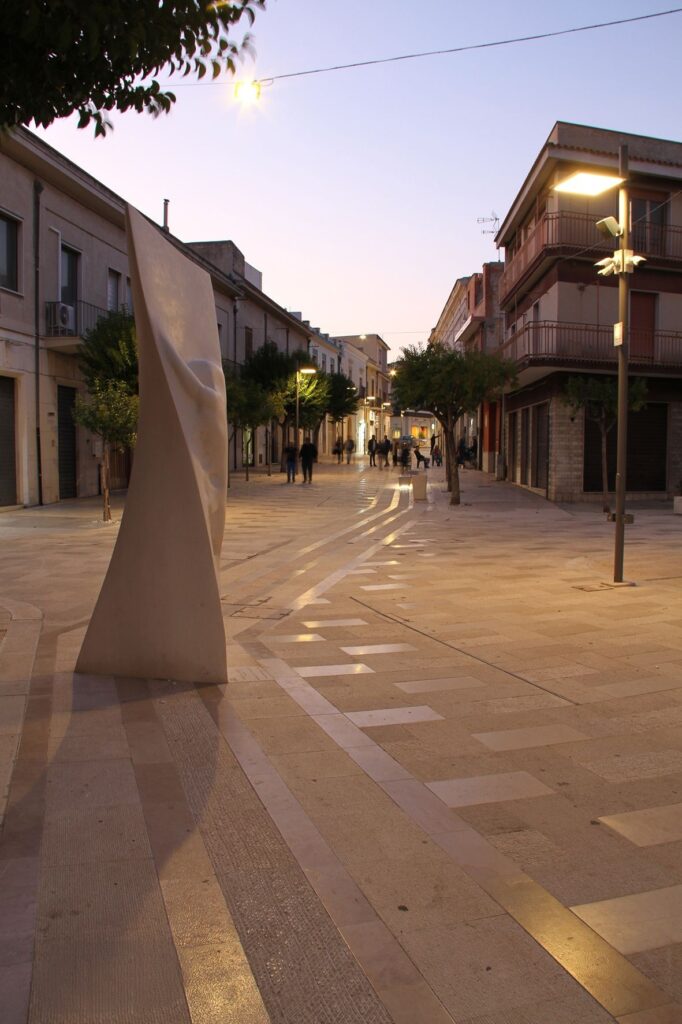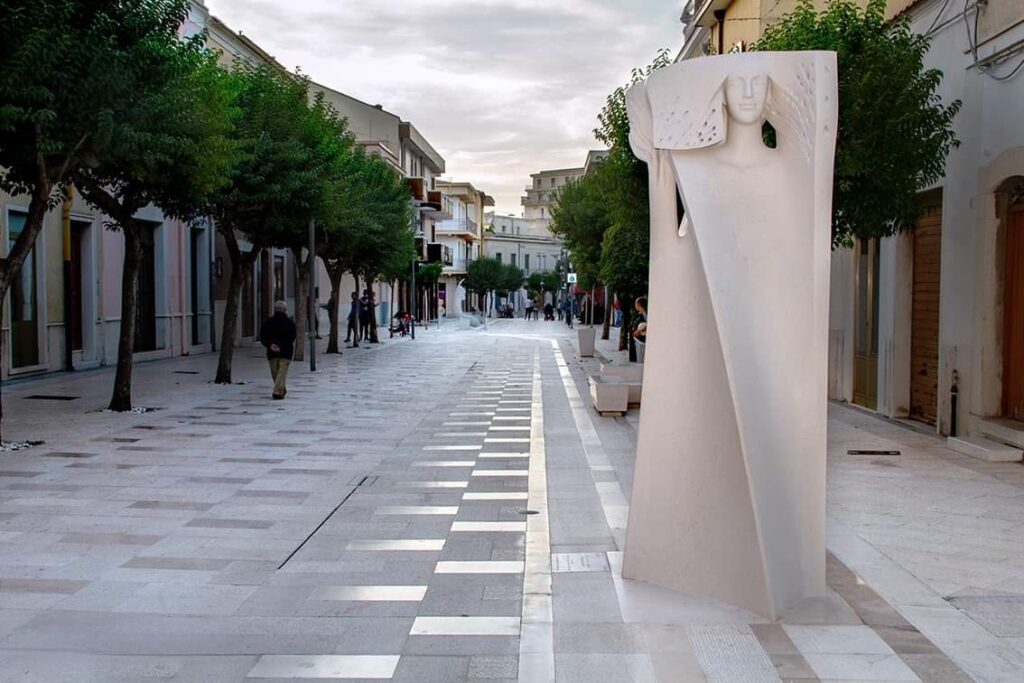Corso Roma – Apricena
The goal of the municipal administration was to redevelop
the old Via Roma, which connected the ancient nucleus with the municipal villa, enhancing the urban space by creating a
permanent open-air exhibition of the Madrepietra di
Apricena, which would improve its recognition. Via Roma
was asphalted, placed lower than the side pavements paved
with Apricena stone. By analyzing the state of affairs of the
places and making our objectives indicated by the Municipal
Administration our own, we wanted to create a unicum, a
continuous square, free of any difference in altitude, which
would also include the square in front of the Villa Comunale,
making it an integral part of the route. We wanted to create a
promenade in a town without the sea. This is why we thought
of Corso Roma as a lounge with its commercial activities,
where you could listen to background music and admire the
shades and processes of the Apricena stone, which was to
become the generator of the architectural composition. To
achieve such a result, we considered it essential to move the
linear course of the old Via Roma to divert the gaze of the
users from the facades of the buildings without particular
architectural value by creating a band that stood out from the
rest of the flooring and on which they could be placed
architectural design elements. In essence, we resorted to the
idea underlying the architecture of the Baroque cities, where
art composes the space to arouse wonder and a sense of
theatricality.
The unicum of Corso Roma consists of three fundamental
elements: the polychrome flooring, the fascia, and the
sculptures. The polychrome flooring in mother-of-stone of
opaque and glossy slabs embedded between them,
depending on the radiation of sunlight / artificial light, creates
a mosaic of light along the path both in the daytime and in
the evening. The polychrome strip with its architecture invites
the visitor to move his gaze along the way. It is on the right,
and then on the left, it rises to become a monolithic seat in
mother-of-stone, descends to continue to be walked, and
then rises again to become a work of art.”
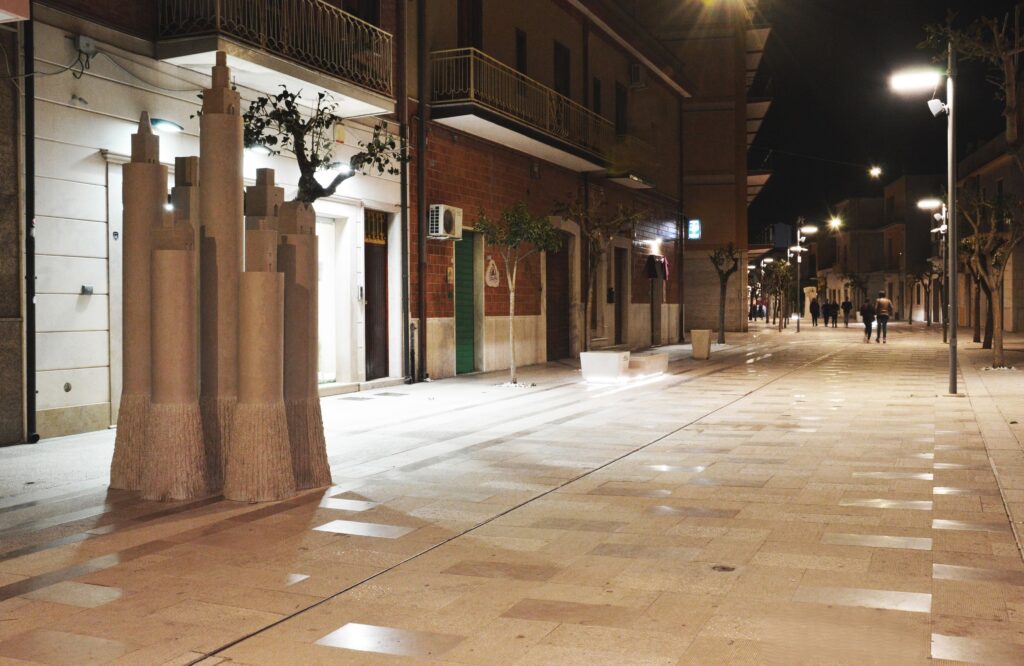
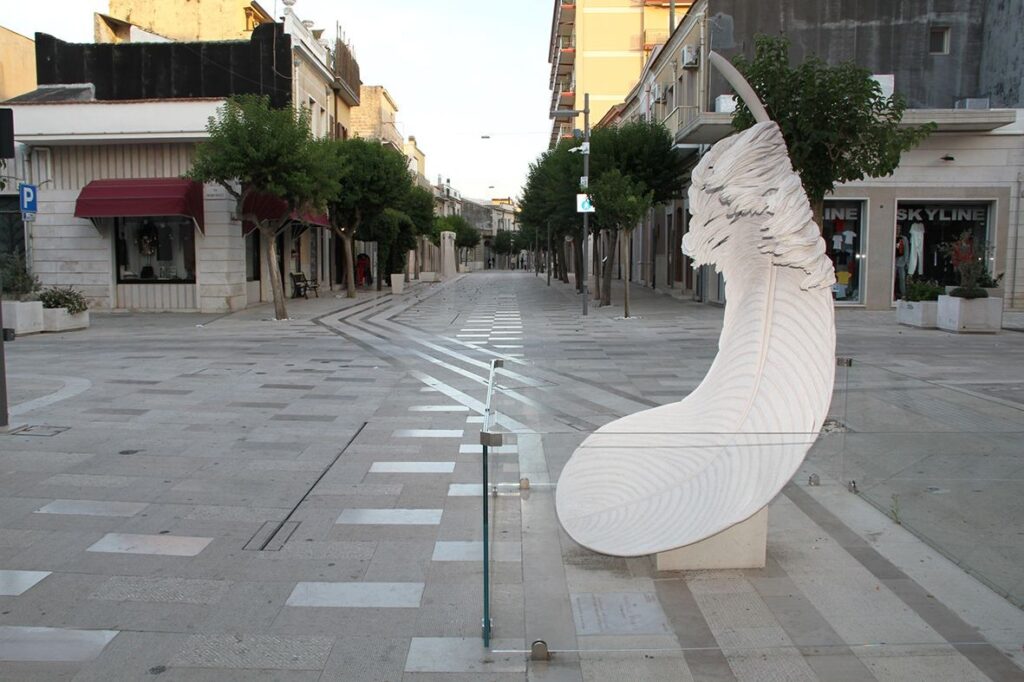
The sculptures in
mother-of-stone, made by internationally renowned artists,
complete and characterize the new course. The
visitor’svisitor’s gaze, as in the Baroque cities, is attracted by
the polychrome band directing the visitor towards the fine
stone sculptures that alternate on both sides of the new
course. The seats and flower boxes complete the course
furnishings, elements of designs designed and then made in
the workshops for processing Apricena stone, as well as the
architectural lighting on poles, located in a mirror concerning
the strip, creating an incredible atmosphere that invites you
to stroll. Creating Corso Roma took work. We needed a
strong idea that characterized Apricena, making it unique in
the eyes of visitors, giving it an international character thanks
to its works of art, and becoming a permanent exhibition of
the mother-of-stone.
